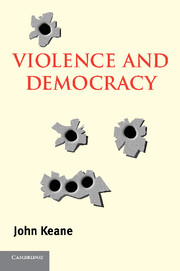Introduction: surplus violence
Published online by Cambridge University Press: 24 May 2010
Summary
As a rule, dictatorships guarantee safe streets and the terror of the doorbell. In democracy the streets may be unsafe after dark, but the most likely visitor in the early hours will be the milkman.
Adam Michnik (1998)This essay is about violence, and the pity of violence. It dwells upon its connections with democracy because unwanted physical interference with the bodies of others, such that they experience pain and mental anguish and, in the extreme case, death – violence, in a word – is the greatest enemy of democracy as we know it. Violence is anathema to its spirit and substance. This follows, almost by definition, because democracy, considered as a set of institutions and as a way of life, is a non-violent means of equally apportioning and publicly monitoring power within and among overlapping communities of people who live according to a wide variety of morals. Under democratic conditions the means of decision-making are neither owned nor wielded privately. While its institutional forms are highly variable, democracy as we know it today minimally requires public respect for others who are equal but different, and such respect extends to their entitlement to organise themselves into opposition to the powers that be. Democracy requires citizens to stay alert, to open their eyes and their mouths – to understand that societies of sheep typically beget governments of wolves. It facilitates criticism of power.
- Type
- Chapter
- Information
- Violence and Democracy , pp. 1 - 14Publisher: Cambridge University PressPrint publication year: 2004



